MACRO OCTOBER IN MARLERA - Episode Ten - ON THE 18TH OF OCTOBER
The previous episode ended with the winged Lasius niger queen ready to fly and, if everything goes according to the reproduction plan, establish a new colony.
When I revisited Marlera three days later ...
... I came across the considerably bigger queens of another species. In this set of four photographs, you can see the Messor wasmanni queen digging the hole in which to start a new colony.
At this point, with the mating done, the queen has lost its wings.
The existing Messor wasmanni colony has released its reproductive members recently. Probably at the end of the previous day. Some winged & wingless males and females ended up in the fangs of spiders. Here you can see a reproductive male with elegant transparent wings caught by a crab spider much smaller than the ant.
Xysticus kempeleni is the name of this spider from the Thomisidae family. The strong venom paralyzes the insects instantly allowing the small spider to hunt big prey without using the silky threads. In this set of eight photographs, the scene is the same, but the background is slightly different in each shot.
This considerably bigger Xysticus lanio, another species from the same genus in the Thomisidae family has caught a reproductive Messor wasmanni male that has lost its wings and was about to die soon anyway.

These ambush predators are well camouflaged on brown surfaces, in leaf litter, or, like in this case, on the top of the tall dry grass.

Here you can see another spider from the same genus but the scene is set on a fresh, green Dittrichia viscosa plant. The ant's wings partially hide the spider in this shot. The following photograph ...

... was taken from a slightly different angle, and I came a bit closer, as well. The name of this third Xysticus species is Xysticus cristatus.
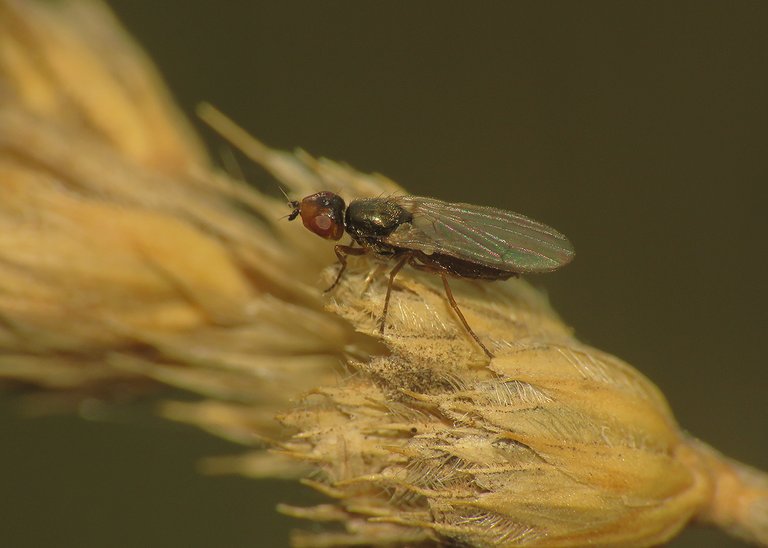
On one of the neighboring ears of the same kind of grass seen in previous shots that show the spiders and their prey, I found a small fly I don't remember seeing before.
Can't tell you the name of the species but I'm pretty sure that it belongs to the Anthomyzidae family.
The fly was photographed on the grass that grows by the side of an unpaved road that gets dusty or muddy depending on the weather. Down on the ground, in the middle of that road ...
... a Messor wasmanni queen was digging.
At some point, a worker ant of the same species stopped by for a second or two.
A bit later a small rove beetle entered the scene. With quite a few similar-looking, dark-colored rove beetles around, I'm not sure about the species in this case. Could be something from the genus Carpelimus, but here again, I'm far from being sure about that. The only thing that I'm completely certain about is that the family is Staphylinidae.
The queen shown in this and the previous three photographs had already dug a nice little cavern in the soil, a little cavern that doesn't look so small when compared to the size of the ant.
On the same road, a couple of meters further, I photographed another Messor wasmanni queen that had recently mated and lost its wings.
This one just started digging.
In this wide shot, you can see a bit of the scenery and the friend who was there with me. The ant queen is also present in the foreground, you can find her in the lower part of the picture.
Besides all these photographs, I also recorded a bit of footage while observing the ants at work. I planned to make a series of GIFs using that video material but the GIFs ended up being too big for upload so I decided to create a short video instead.
The music in the video is some lovely free-to-use stuff I found on Pixabay.
Music by Sergio Prosvirini from Pixabay
About a hundred meters from the place with ants, on the thorny leaves of the Carduus nutans thistle that grows by the side of another road, I photographed a beautiful, iridescent wasp from the Chrysididae family.
In these two shots, the wasp is cleaning its mouth and antennae, while in the following triptych...
... you can watch the same insect cleaning its wings and abdomen. The name of the species is Pseudomalus auratus.

This minuscule aphid was photographed on the same plant. It looked like a pale dot embedded in the structure of the leaf with a naked eye. The insect anatomy of that dot was revealed once I took a better look through the macro lens.

Capitophorus elaeagni is the name of this species from the Aphididae family.
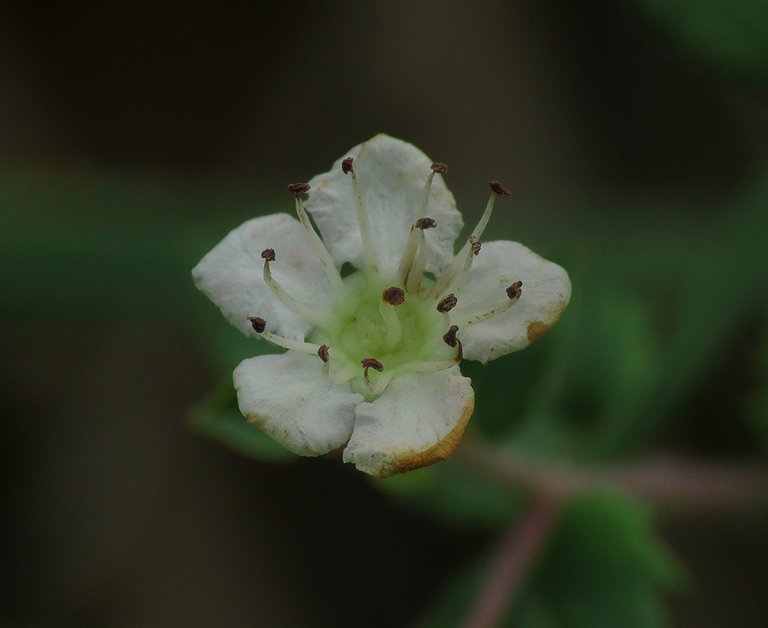
A couple of meters from the thistle, I found a Crataegus monogyna flower. There was only one flower on the entire shrub.
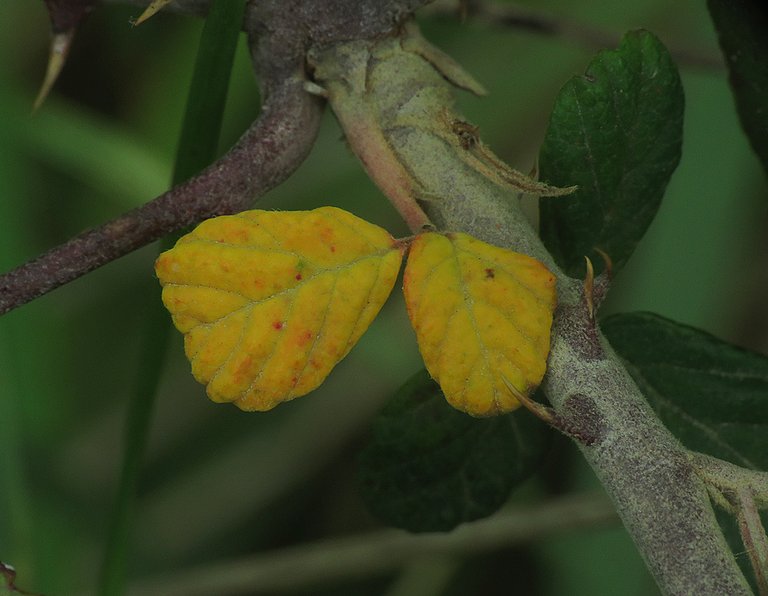
Here you can see a detail from the blackberry shrub. Two lovely yellow leaves among the many green ones.
With the focus back on the thistle, I photographed this Limnophora tigrina, a fly from the Muscidae family.
As I said before, the thistle was - and still is, growing by the side of one of the many narrow roads that lead through Marlera. Most of the roads are just paths with less vegetation than the surroundings but this one is different - it was recently covered with a layer of gravel.
At some point, a snake appeared from the surrounding shrubs ...
... and continued moving towards the camera.
About ten meters from me, the snake changed its direction, ready to hide in the dense vegetation on the other side of the road. Regarding the name of the species, this is the non-venomous Hierophis viridiflavus carbonarius, commonly known as the western whip snake.
Here you can take a look at the vegetation and the scenery near the place where I photographed the and that started this post. The flowers in the foreground of the shot belong to the Centaurea nigrescens plant.
Not far from the flowers shown in the previous photograph, I found this grasshopper well-camouflaged in the fresh green grass.
Chorthippus brunneus is the name of this species that appeared in the previous episode as well.
This is the Helicoverpa armigera, a moth larva that appears in almost every episode.

Toya propinqua also isn't a newcomer to the series.
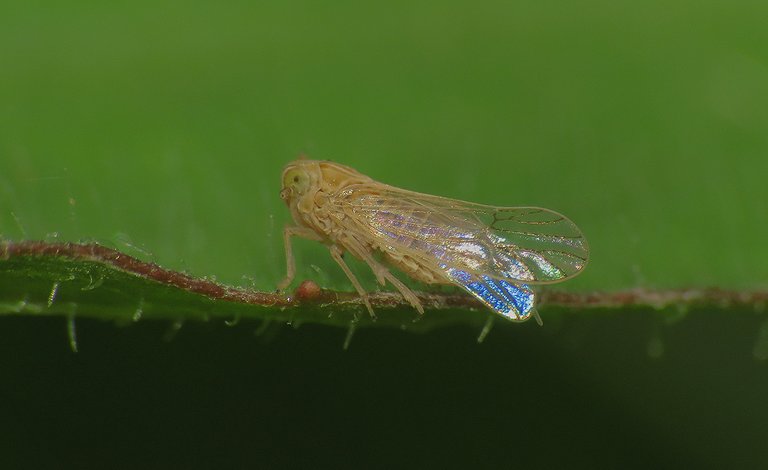
Unlike the planthopper of the same species that appeared in the seventh episode, the soft pale adult male shown in this and the previous photograph just came out of its old nymphal skin. In the following photograph ...
... you can take another look at the unpaved road where all the ants seen at the beginning of the post were photographed. The following scene ...
... was also photographed there. I don't know what's this situation exactly about. It seems that one of the dying reproductive males got attacked by the ants of the same species. Less than a meter from there ...
... a Messor wasmanni worker was transporting a small snail shell.
I followed this ant through the macro lens for a couple of minutes, and then ...

... I returned to my car and drove back home.
AND THAT'S IT. AS ALWAYS HERE ON HIVE, THE PHOTOGRAPHS & THE VIDEO ARE MY WORK - THE END. ... oh-no, wait ... I almost forgot to say the usual few words about Marlera. So, what's this place called Marlera? Well, Marlera is a coastal area situated a couple of kilometers from the village of Liznjan and about five or six kilometers from where I live.
The following links will take you to the sites with more information about some of the protagonists of this post. I found some stuff about them there.
https://www.antwiki.org/wiki/Messor_wasmanni
https://wiki.arages.de/index.php?title=Xysticus_kempeleni
https://en.wikipedia.org/wiki/Xysticus_cristatus
https://en.wikipedia.org/wiki/Anthomyzidae
https://en.wikipedia.org/wiki/Pseudomalus_auratus
https://bladmineerders.nl/parasites/animalia/arthropoda/insecta/hemiptera/sternorrhyncha/aphidoidea/aphididae/aphidinae/macrosiphini/capitophorus/capitophorus-elaeagni/
https://www.eakringbirds.com/eakringbirds2/insectinfocuslimnophoratigrina.htm
https://species.wikimedia.org/wiki/Hierophis_viridiflavus_carbonarius


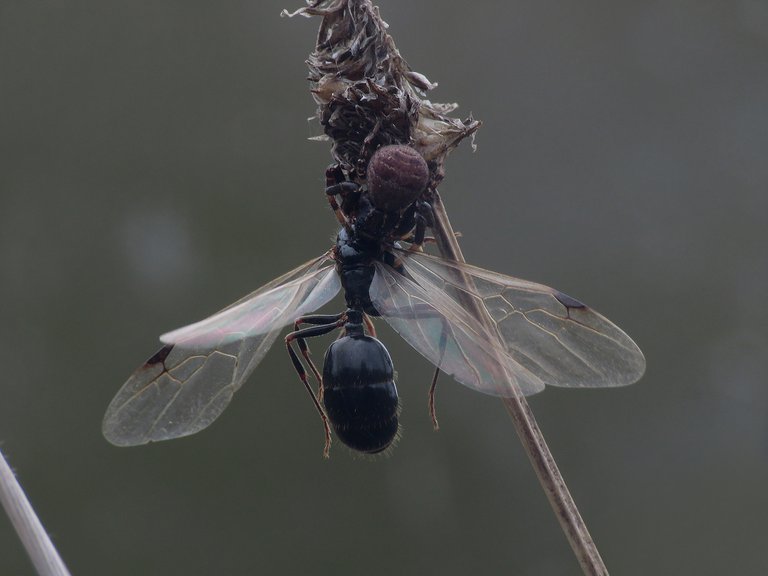

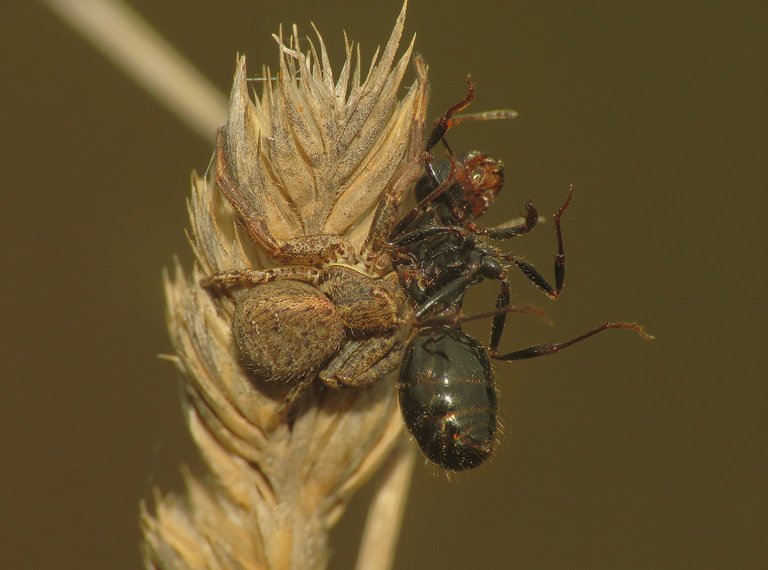

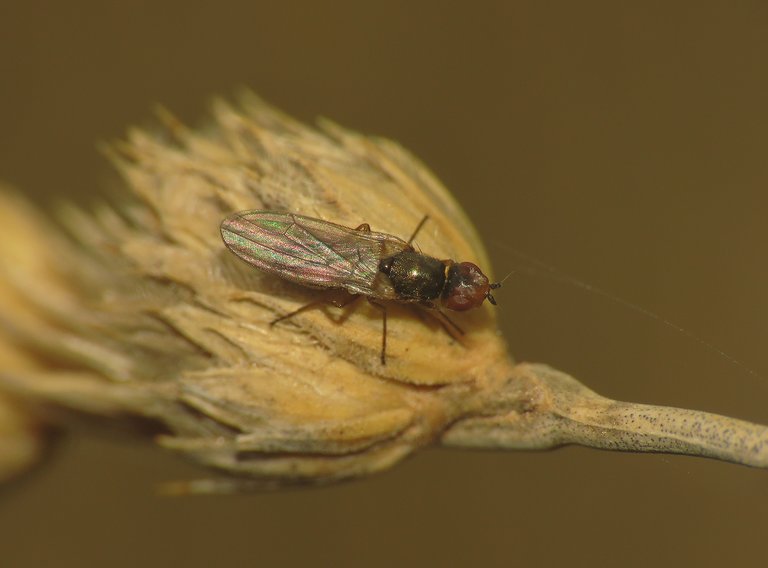
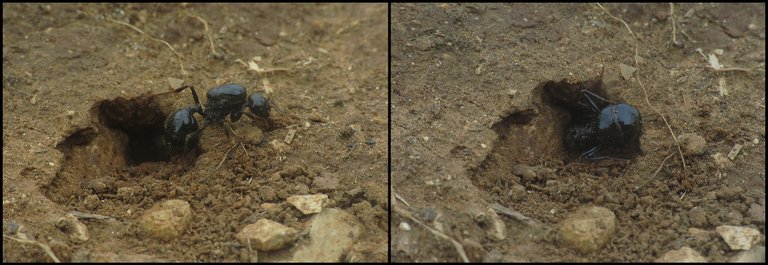

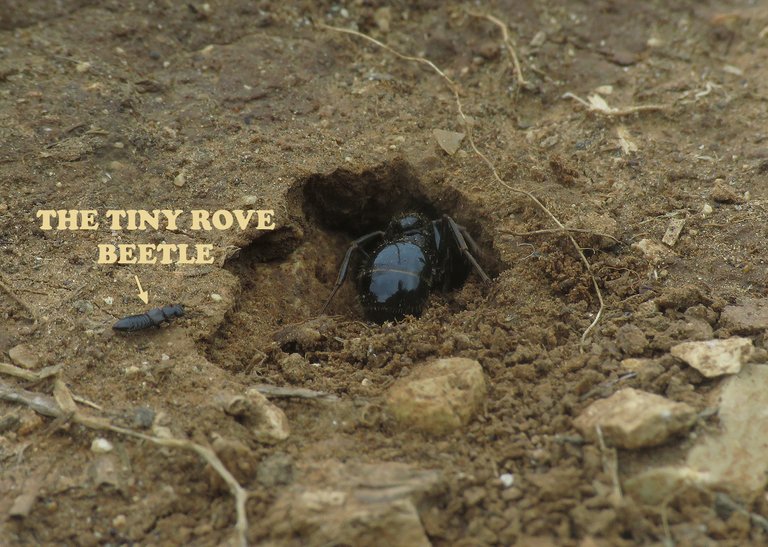







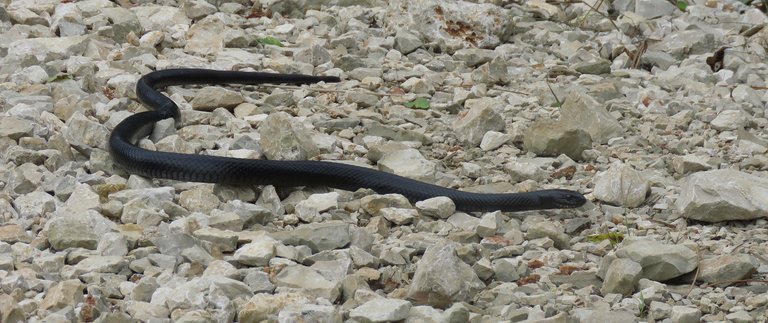



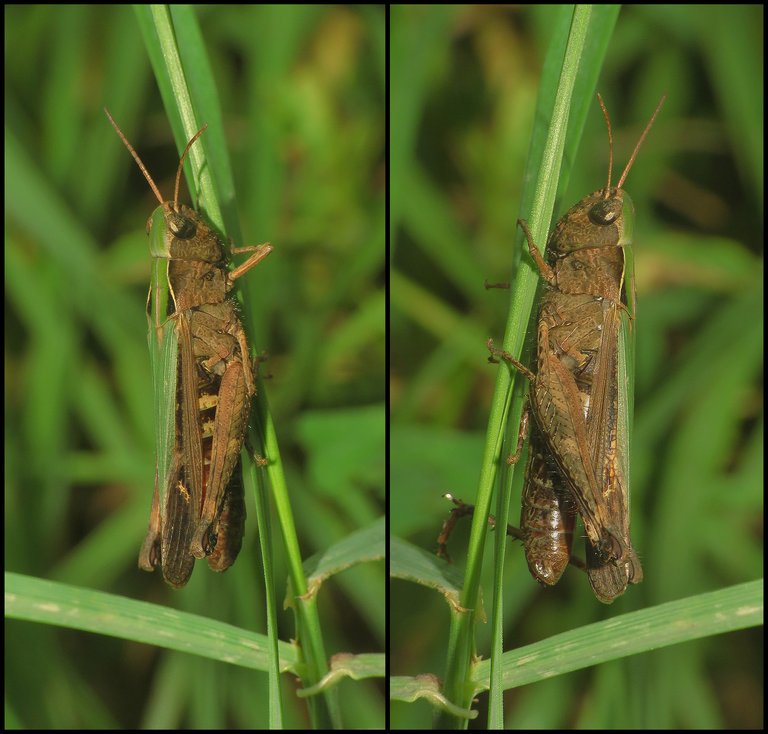

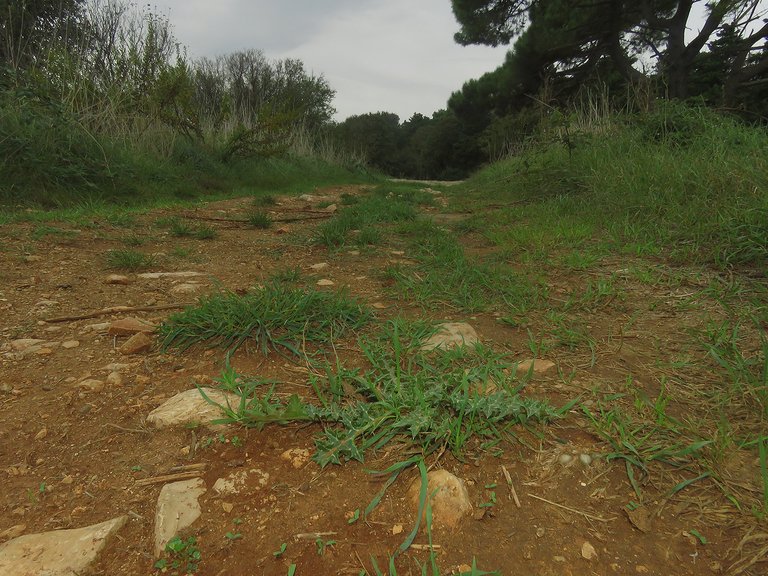
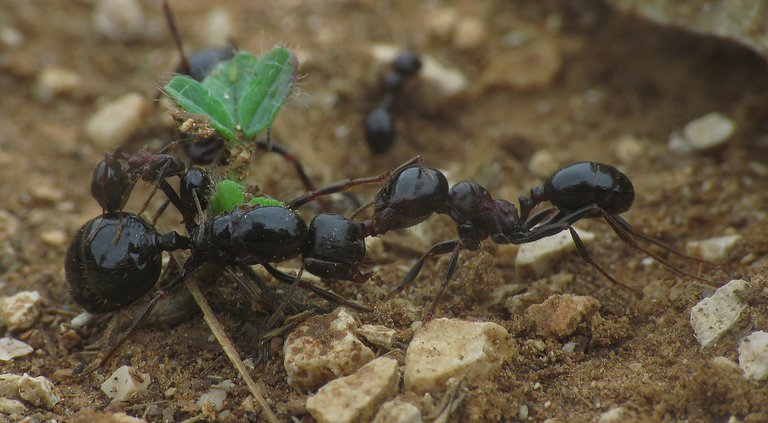


Wow wonderful photos sir, my heart becomes happy after seeing your photography. 🤩😍😍
Thank you. 🙂 Glad you like this macro stuff.
@tipu curate
Upvoted 👌 (Mana: 43/63) Liquid rewards.
Wow!!! What a nice photos , I always enjoy any moment I read through your blog, what an amazing creature/Nature, look and the ant and the spider, the black snake and everything here are very perfect 🥰🥰🥰🥰🥰🥰🥰🌹🥰🥰, I sincerely appreciate.
Thank you. 🙂 Glad you like these posts about nature.
I really appreciate all about nature 🥰🥰🥰🥰.
Wow! Really appreciated the pictures are really clear and macro i have not seen any insect in macro before
https://twitter.com/JunaidFazal1111/status/1719580369832620214
It's absolutely amazing how you can follow and track what these insects actually does😳
Did the wasp attack the spider in those photos? Or did he just land on him?
Do you mean in the photographs where the spiders are feeding on what looks a bit like some black wasps? Those wasp-like insects are winged ants, the only caste in an ant colony able to reproduce. It's no wonder they look like wasps - ants are fairly closely related to wasps. The spiders caught them like they would catch any other prey. These crab spiders are ambush predators so they surely caught the ants when the ants were climbing those plats on which the spiders were waiting for something edible to pass by.
Hehe, look at me thinking only chameleon camouflage until. I read this post.
The insect looks pretty cute though, you keep taking beautiful shots as always.
Keep up the good work sir.
🙂 Always glad you like these posts about nature.
Yeah I like it a lot.
Thanks for your contribution to the STEMsocial community. Feel free to join us on discord to get to know the rest of us!
Please consider delegating to the @stemsocial account (85% of the curation rewards are returned).
You may also include @stemsocial as a beneficiary of the rewards of this post to get a stronger support.
At first those biggers queens look like scorpions
Yes 🙂 Their shiny black segmented bodies can resemble a scorpion at first sight.
I think first tym i have seen ant so close. So beautiful shots... thanks for always sharing that macro and beautiful pictures 😍
Have a great day ahead ☺️
Thank you. 🙂 I wish a great day to you too.

I'm not sure if I saw similar insect already, or they're a different breed of ants.
The snake scared me though.
There are many species of ants around the world. Some of those species look very similar, some other species are present more or less everywhere in the world, so yes, there is a good chance that you saw these ants I photographed for this post.
Hello dear friend @borjan good morning
I admire the knowledge you have about insects, it is incredible that you could recognize a queen and what it looks like after mating.
beautiful photographs, I appreciate that you let us know all this information and the beautiful shots
Have a wonderful day
Thank you. 🙂 Glad you like these posts about nature and macro photography. I'm learning about insects while preparing these posts. I wish a great day to you too.
Naturaleza increíble, como una araña pequeña, puede neutralizar a un macho reproductor de la especie antes mencionada relativamente más grande que ella.
I hate Snakes, even the "non-venomous" Hierophis viridiflavus. They can still bite you though, venomous or not !LOL
The flying Ants are very detailed & fascinating photos, and your background information makes them interesting to learn more about.
Stay !ALIVE and avoid the SNAKES 🐍🐍🐍 !VSC !PIZZA
@fun.farms has sent VSC to @borjan
This post was rewarded with 0.1 VSC to support your work.
Join our photography communityVisual Shots
Check here to view or trade VSC Tokens
Be part of our Curation Trail
@fun.farms ha enviado VSC a @borjan
Éste post fue recompensado con 0.1 VSC para apoyar tu trabajo.
Únete a nuestra comunidad de fotografía Visual Shots
Consulte aquí para ver o intercambiar VSC Tokens
Se parte de nuestro Trail de Curación
lolztoken.com
I called her up and asked “Did you get my drift?”
Credit: reddit
@borjan, I sent you an $LOLZ on behalf of fun.farms
(1/10)
NEW: Join LOLZ's Daily Earn and Burn Contest and win $LOLZ
@borjan! You Are Alive so I just staked 0.1 $ALIVE to your account on behalf of @ fun.farms. (1/10)
The tip has been paid for by the We Are Alive Tribe through the earnings on @alive.chat, feel free to swing by our daily chat any time you want, plus you can win Hive Power (2x 50 HP) and Alive Power (2x 500 AP) delegations (4 weeks), and Ecency Points (4x 50 EP), in our chat every day.

🙂
$PIZZA slices delivered:
@jlinaresp(7/10) tipped @borjan
fun.farms tipped borjan
https://twitter.com/lee19389/status/1719701519849685283
#hive #posh
Your photos are always amazing
I love them. I just hope you rear insects someday, lol
You love them so much
😃 I'm kind of already doing it. Since I don't use any poison or repellent in my garden, I usually have more insects than fruits and vegetables there 😂
Amazing click's. All are look fantastic. But the snake is scary isn't it??
Yes, can be a bit scary 🙂 but is not aggressive, is not venomous, and is always ready to run away from people ... so objectively, encountering a rabbit, some kind of bird, or this snake in nature - is practically all the same.
Congratulations @borjan! You have completed the following achievement on the Hive blockchain And have been rewarded with New badge(s)
Your next target is to reach 22000 replies.
You can view your badges on your board and compare yourself to others in the Ranking
If you no longer want to receive notifications, reply to this comment with the word
STOPCheck out our last posts:
Fascinating photos as always!... It is a pleasure to watch how you magnify that small world and show it to us!
!discovery shots
!VSC
!PIZZA
@jlinaresp has sent VSC to @borjan
This post was rewarded with 0.1 VSC to support your work.
Join our photography communityVisual Shots
Check here to view or trade VSC Tokens
Be part of our Curation Trail
@jlinaresp ha enviado VSC a @borjan
Éste post fue recompensado con 0.1 VSC para apoyar tu trabajo.
Únete a nuestra comunidad de fotografía Visual Shots
Consulte aquí para ver o intercambiar VSC Tokens
Se parte de nuestro Trail de Curación
🙂

This post was shared and voted inside the discord by the curators team of Discovery-it in collaboration with Visual Shots community.
Discovery-it is also a Witness, vote for us here
Delegate to us for passive income. Check our 80% fee-back Program
https://twitter.com/LovingGirlHive/status/1719761425437168128
You are always bringing different varieties of insects, and I love that I am learning from you each day. It's been a while I have seen an ant on a closer look in photos, they look beautiful. Wait! A minute! It seems you are not scared of snakes, that black snake looks scary oo and if I was the one, I don't think I will stay for a second to have a shot of it in my camera,lol!
😃I like snakes actually. If a snake isn't venomous I'm not scared of it. 🙂 That black one looks scary but is a nice snake that runs away from people and has no venom.
https://twitter.com/jewellery_all/status/1719845671837245607
What a wonderful post. The detail in the pictures is beyond words.
I love the choice of music that you used in the video.
Ants are insects that most people take for granted. They can be a real nuisance, but they are so beneficial for the environment. Ants aerate the soil with their tunnels, enrich the soil, and pollinate flowers as they make their way around, and they do so much more.
Yes, ants have a great beneficial inpact on ecosystems all around the world. And there are so many different species, that not only look different but also live a wide variety of surprising lifestyles in many different social organizations. Absolutely amazing insects and they are easy to find. No need to go who knows where to find some interesting ants.
The one thing that is most impressive to me is their strength, being able to carry up to 50 times their own weight. Amazing for sure.
Very cool seeing the queen digging away.